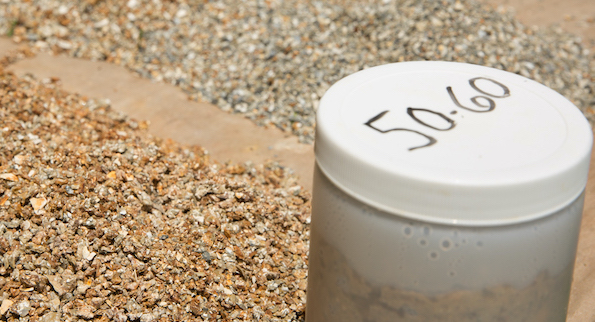Replenishing eastern Virginia’s primary groundwater supply
What is managed aquifer recharge?
The Sustainable Water Initiative for Tomorrow (SWIFT) proposes to replenish the Potomac aquifer, eastern Virginia’s primary groundwater supply, with purified water. This purified water would be treated to be compatible with the existing water in the aquifer to ensure seamless integration into the system and introduced by recharge wells drilled at seven HRSD treatment plant sites. Recharge wells store water for future use by placing it deep underground into formations below the shallow soil layer.
Why is the Potomac aquifer ideal for SWIFT replenishment?
Multiple factors contribute to experts’ confidence in the suitability of SWIFT groundwater recharge wells in eastern Virginia. These include the proven retention capacity and homogeneous geology of the Potomac aquifer as well as the relatively shallow depths and low replenishment pressures of the recharge wells.
Replacing what has been removed
SWIFT proposes to simply return water to the Potomac aquifer that has been removed over time. These groundwater recharge wells would be adding water to a formation that is already a proven storage vessel for trillions of gallons of pressurized water. While the proposed recharge rate of 120 million gallons each day will help offset current groundwater withdrawals, it will not cause the aquifer to reach or surpass its proven carrying capacity. The SWIFT process of replenishing the Potomac aquifer differs greatly from the process of removing oil and natural gas from rock formations by hydraulic fracturing and enhanced oil production. These activities utilize wastewater injection wells that may force fluid into rock formations that did not previously contain it. Such rock formations have limited proven retention capacity and in some cases, the pressurized wastewater causes the surrounding rocks to crack. This can lead to minor earth disturbances and, in some rare cases, noticeable earthquakes.

Conducive geology
The geology of the Potomac aquifer in our region makes it an ideal candidate for replenishment. Unlike western states such as Oklahoma that are abundant in oil and natural gas-rich shale (a hard, non-porous rock), the geology of eastern Virginia is mainly comprised of unconsolidated sediments including clay, silts sands and shells. The coarser particles are highly permeable and porous, which allows water to travel through them easily and without much force. Unlike shale, which is predisposed to fracturing, these substances do not crack when placed under pressure. This significantly decreases the likelihood that SWIFT groundwater injection wells would cause earth disturbances in our region.
Shallow depths and low replenishment pressures
An injection well’s depth depends on the type of fluid and the region’s geology. When disposing of fluid unintended for future use, injection wells may travel tens-of thousands of feet past human groundwater sources to reach deep formations far-removed from drinking water supplies. These deep wells are common in hydraulic fracturing and enhanced oil production. SWIFT recharge wells, however, would travel approximately 2,000 feet, past numerous shallow aquifers and confining layers, to reach the Potomac aquifer.
In eastern Virginia, drilling to this depth does not require disturbing large rock formations or existing faults and is therefore comparatively noninvasive.
The replenishment pressures of SWIFT recharge wells would also differ greatly from that used in traditional injection wells. SWIFT proposes to recharge the Potomac Aquifer at a rate of 10-40 psi’s, which is significantly lower than the 700-1500 psi’s of force used to dispose of wastewater produced during oil production.
How will we know SWIFT groundwater injection is safe?
An expert panel comprised of geologists and hydraulic engineers is leading further research into the composition of the Potomac aquifer and the safest pressures at which to inject purified water into the ground. This ensures SWIFT scientists will have an abundance of reliable data as they develop and construct the SWIFT Research Center at HRSD’s Nansemond Treatment Plant, which has an estimated completion date of 2018. The facility will demonstrate SWIFT’s ability to replenish the Potomac aquifer with purified water while providing scientists with valuable real-time knowledge.